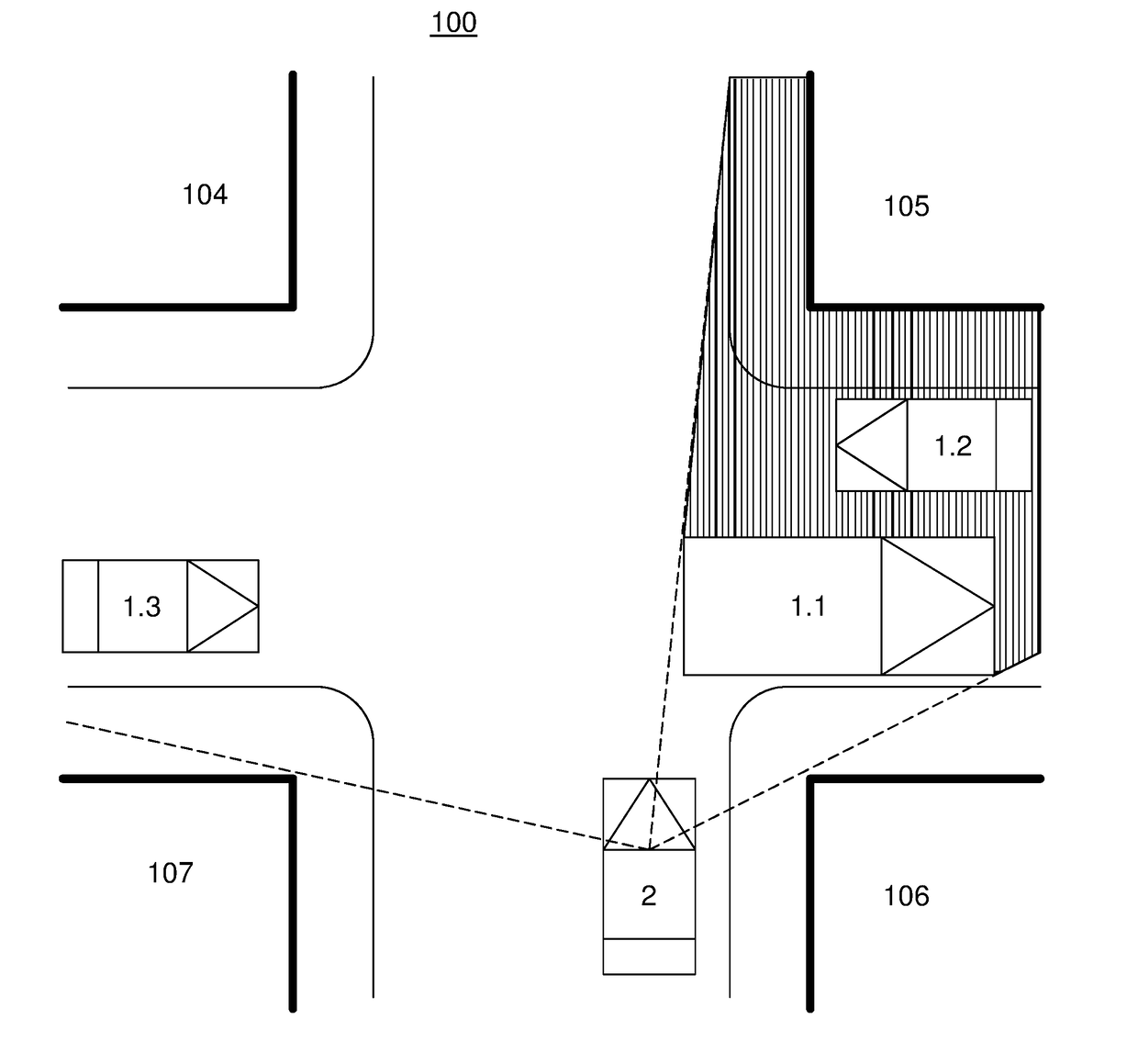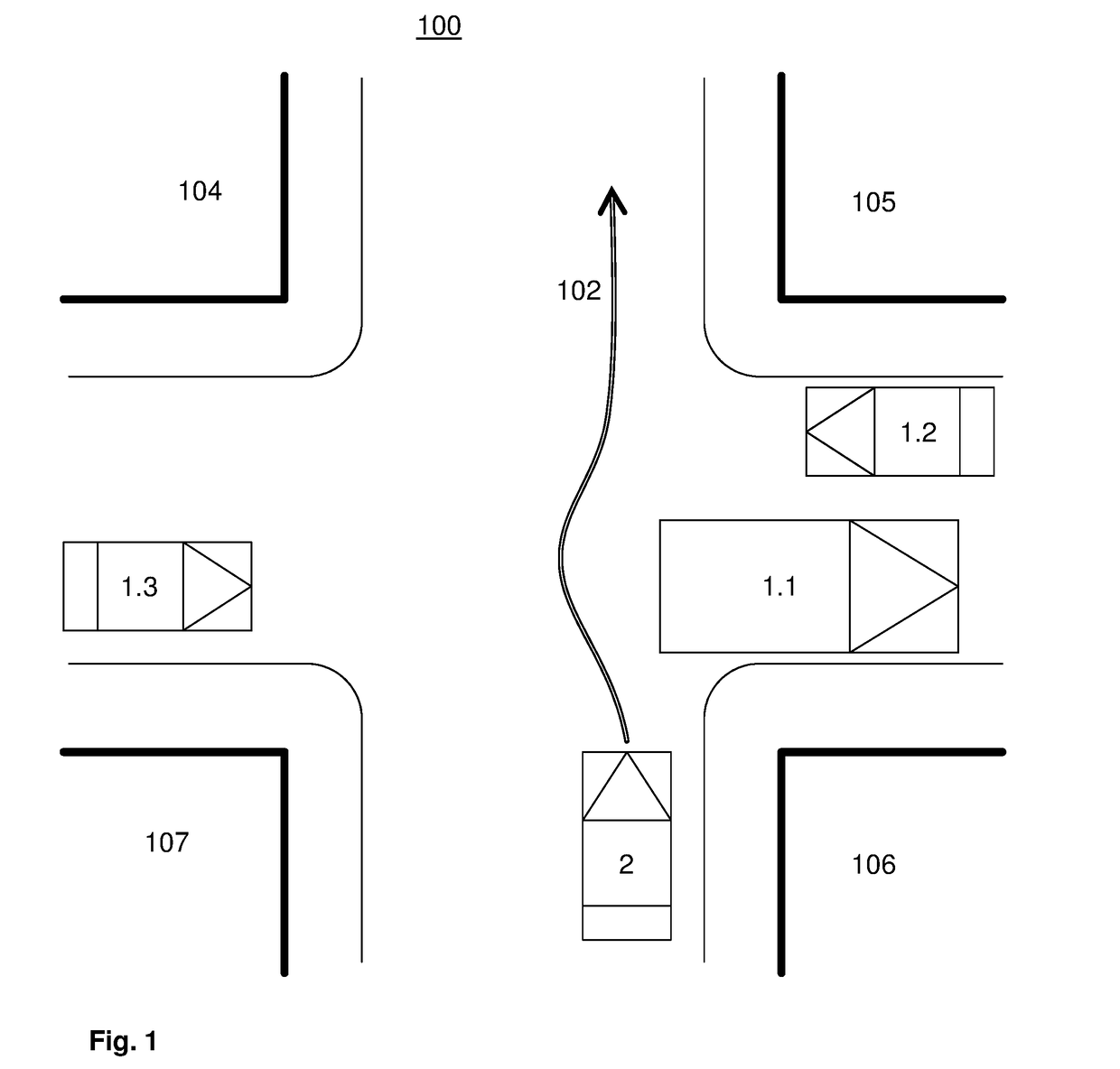Method and device for selecting and transmitting sensor data from a first motor vehicle to a second motor vehicle
a sensor data and motor vehicle technology, applied in the direction of measurement devices, using reradiation, instruments, etc., can solve the problems of inconvenient discriminatory information transmission methods known from the prior art, no detailed data transmission is offered that is suitable for assisting a driver, and the car-to-car communication architecture known to date, etc., to achieve sufficient reliability and low latency
- Summary
- Abstract
- Description
- Claims
- Application Information
AI Technical Summary
Benefits of technology
Problems solved by technology
Method used
Image
Examples
Embodiment Construction
Description of Embodiments
[0048]FIG. 1 shows a schematic depiction of a traffic space 100 in the surroundings of a second motor vehicle 2. The present traffic space is a junction between two roads, with the general right-of-way rule of “right before left” applying. There are several other vehicles in the present traffic space, and at the corners of the junction there are buildings 104-107, indicated by the thicker boundary lines, with footpaths in front of them. The buildings 104-107 and a large vehicle 1.1 that has stopped in a road branching off to the right block part of the view of the traffic space for the driver of the second vehicle 2 and sensors mounted in the second vehicle 2. The planned route of the second motor vehicle 2 is indicated by the arrow 102. The driver of the second motor vehicle 2 should yield right of way to the vehicle 1.2 coming from the right before he himself can cross the junction.
[0049]The areas able to be picked up by the driver of the second motor veh...
PUM
 Login to View More
Login to View More Abstract
Description
Claims
Application Information
 Login to View More
Login to View More - R&D
- Intellectual Property
- Life Sciences
- Materials
- Tech Scout
- Unparalleled Data Quality
- Higher Quality Content
- 60% Fewer Hallucinations
Browse by: Latest US Patents, China's latest patents, Technical Efficacy Thesaurus, Application Domain, Technology Topic, Popular Technical Reports.
© 2025 PatSnap. All rights reserved.Legal|Privacy policy|Modern Slavery Act Transparency Statement|Sitemap|About US| Contact US: help@patsnap.com



